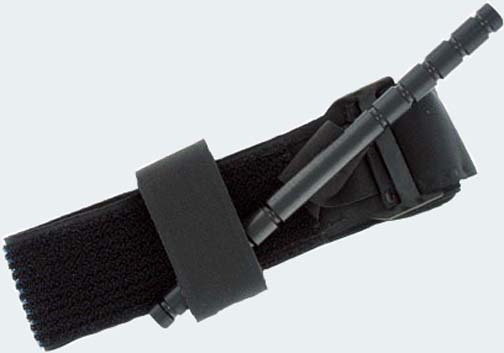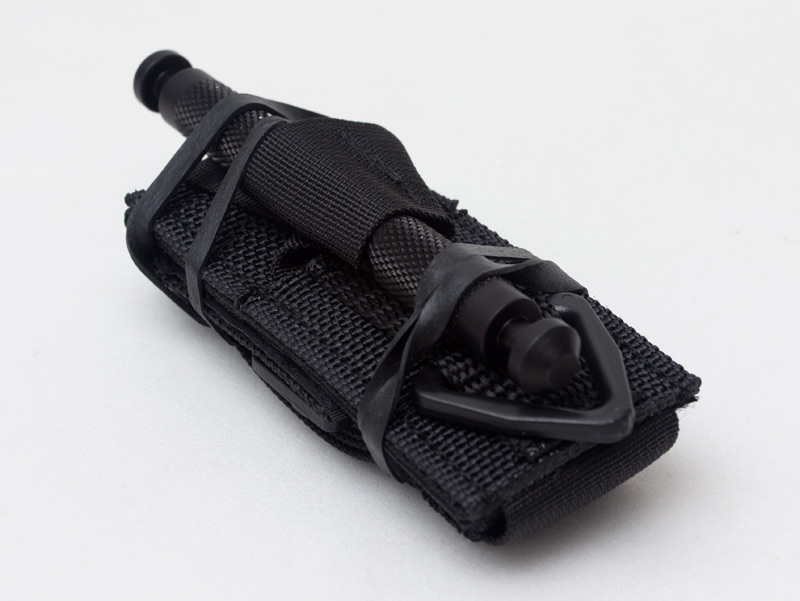Well – what’s in your medkit? Do you have a TQ at home, in your vehicle, at the office?
Military guys outside the wire don’t count. LEOs On The Job – if it’s in a first aid kit in your trunk, it doesn’t count. Armed and Ready Citizens – if it’s buried in the medicine cabinet or you’ve never practiced with it…it doesn’t count.

One of the most obvious but often overlooked aspects of carrying a gun is the possiblity that if you are shooting a gun, you might end up getting shot by the gun.
It’s not as simple as “Well, I might get into a gunfight, but I’m sure I’ll be just fine and win it.”
That’s what WE want to believe, and honestly that’s what we all want to happen, but that’s not reality. Reality is that good guys get tagged sometimes. You, someone in your squad or team, hell your wife or kids in the parking lot of a 7/11. People get hit. A dirtball that’s a good shot, a stray round or even just dumb terrible luck. Let’s go with the bad guy no longer has a frontal lobe. Medical attention is 15 minutes to 1hr away, and you have a gunshot wound to tend to. What now?
Well if you put as much attention into aspects of your kit as you did your choice of firearms, holsters and mag pouches, you have a med kit handy. Regardless if you are a soldier deployed into harm’s way, a cop on a the beat or Joe Snuffy the accountant out for dinner with his wife, you should have a medical kit handy. For guys in the service, you have a medic or a corpsman (probably). For cops you have EMS and nearby hospitals, and for civilians, especially depending where you live, you have yourself and a cell phone to dial 911. None of those, from the corpsman to 911-dispatched ambulance, is an immediate gratification proposition. There is almost certainly going to be a wait involved.
Having a small kit on your person, in your house, in the truck, etc. can be a life saver, as you wait for more advanced care. To put things simply, there are two primary ways that a bullet will kill you. One, It hits something very important that you cannot live without (brain, heart, spinal cord, etc.) Second is blood loss. You are looking at about 4-5 liters of blood for an average sized adult woman and 5 to 6 for the equivalent man (watch the video below). Hypovolemic shock is an emergency condition in which severe blood and fluid loss make the heart unable to pump enough blood to the body. This type of shock can cause many organs to stop working. For many people, this shock can occur in as little as 1/5th blood loss. Obviously, the more blood you lose the worse things are going to get for you. Two of the best things you can carry to counter blood loss are tourniquets/TQs and compression bandages.

Dating back to the 4th century BC, Alexander the great and his army used simple tourniquets to control bleeding. Today let’s look at the options out there for one commonly over looked piece of gear: the tourniquet. TQs were once verboten. You only put one on in the absolute most dire of emergencies because it would cause a “loss of limb.” We know now that’s not true. You’re now encouraged to use a TQ to stop bleeding (barring a paper cut or spot where you nicked yourself shaving).
The tourniquet gets its name from the French word “Tourner” which means “turn”. In other words, a simple garrot with a rod to twist, which constricts down and cuts off blood flow, which prevents the patient (or you) from hemorrhaging to death. The theory is simple, and just about every Boy Scout knows how to make one. So we’ll start with that.
1) Simple/ field expedient tourniquet.

This can be a strip of rubber tubing, a tightly cinched down belt or pack strap, a triangular bandage, or piece of cordage. Paired with a sturdy stick or pen, you construct the tourniquet on site and twist down. The down side, this can be less than ideal for multiple injuries or lack of materials. They can be slow to build when seconds matter.
2) Combat Application Tourniquet (CAT) from north American rescue

Definitely the most commonly carried tourniquet in the military, these simple nylon and Velcro tourniquets can be found relatively cheap online and at sportsman shows (please buy all Med gear from reputable dealers like eleven10 medical or Dark angel medical, because there are actual counterfeits out there!). The down side is that the early models are known to have issues with the plastic hardware such as the triglide and cinch handle cracking. This has been corrected to the best of our knowledge, and the CAT is still issued throughout the military. They are relatively easy and quick to deploy, requiring little training to master. Most guys will prestage the tourniquet to assist in self-aid application. They can be used one handed, but it’s more difficult.
3) SOF Tactical Tourniquet (SOFTT) from Tac Med Solutions

Similar to the CAT in size and layout, the SOFTT tourniquet features some improvements in the form of a metal cinch handle and a metal buckle to tighten down before applying pressure. With few plastic parts to break or be effected by severe heat/cold; the SOFTT is the preferred tourniquet of many elite military units.
4) SWAT-Tourniquet (SWAT-T)

The SWAT-T’s name stands for Stretch, Wrap And Tuck. It’s an extremely simple rubber tourniquet, taking up little space and is extremely light. A long, wide strip of medical grade rubber, the SWAT-T can be applied one handed, and is useful in more applications than just as a tourniquet. Paired with QuickClot combat gauze or celox rapid hemostatic gauze, the SWAT-T works great as a compression bandage. More and more 18D and SOCOM medics are carrying this multipurpose tourniquet in their aid bags for this reason.
Whichever one you get, whether it’s one of the ones we mentioned or a different one, make sure you can put it on one-handed.

Obviously these are just a few choices open to you. There are many products on the market, but these are by far the most commonly carried by the military and law enforcement. The key thing to understand is regardless of which tourniquet you carry, seek professional medical training and practice your system. Gear never replaces knowledge, and if you find yourself ill equipped – don’t panic. Find a solution and handle the trauma.
Stay tuned for more information on medical gear reviews in the future. Seriously, take the time to reevaluate your kit and mindset when it comes to severe trauma. If could be a stray round while out hunting, an inexcusable ND on the range, or a lucky shot from a criminal. Plan ahead. It doesn’t take long to bleed out enough that you can’t function (video courtesy of Dark Angel Medical).
)
Some places to pick up medical gear:
http://www.1110gear.com/tourniquets/
http://www.shop.darkangelmedical.com/Tourniquets_c15.htm
http://www.tacmedsolutions.com/product/sof-tactical-tourniquet-wide/
http://www.swattourniquet.com/
Oh, and make sure your friends, family and kids know how to apply a TQ. The life you save might be your own.








0 Comments